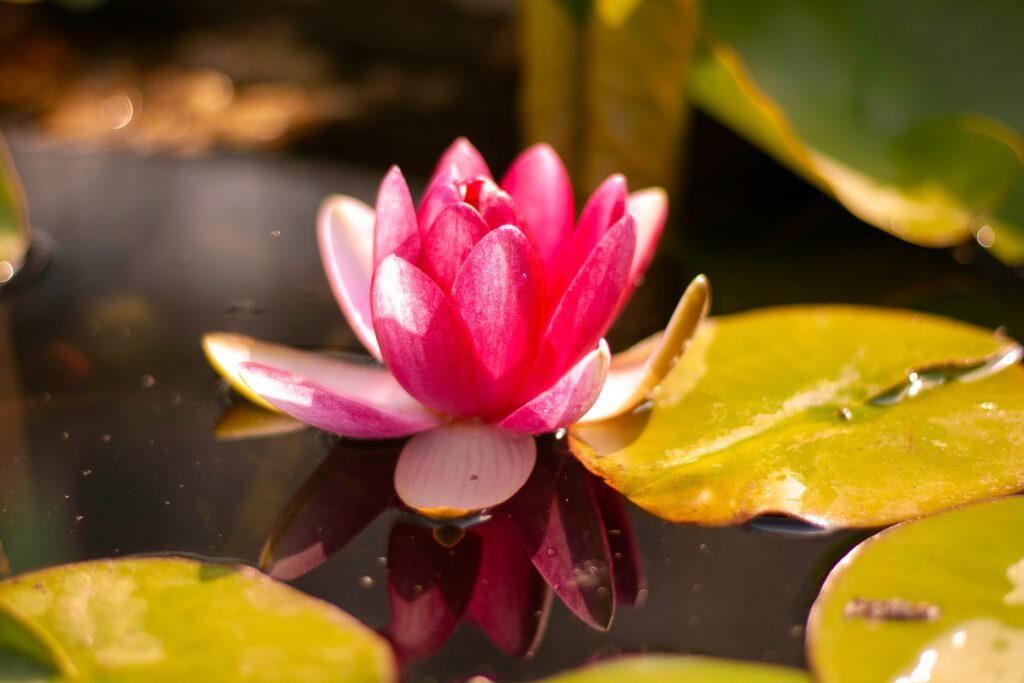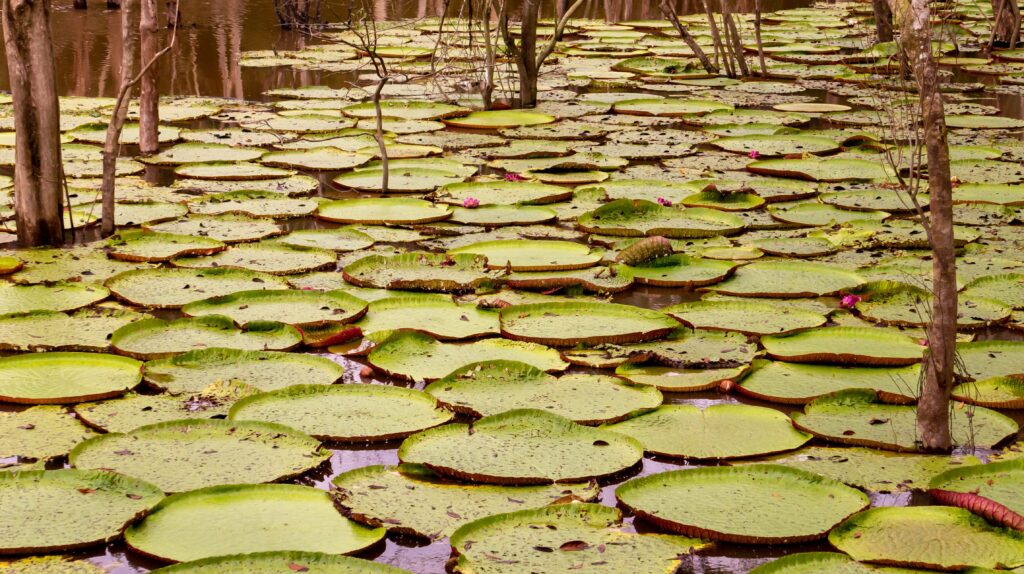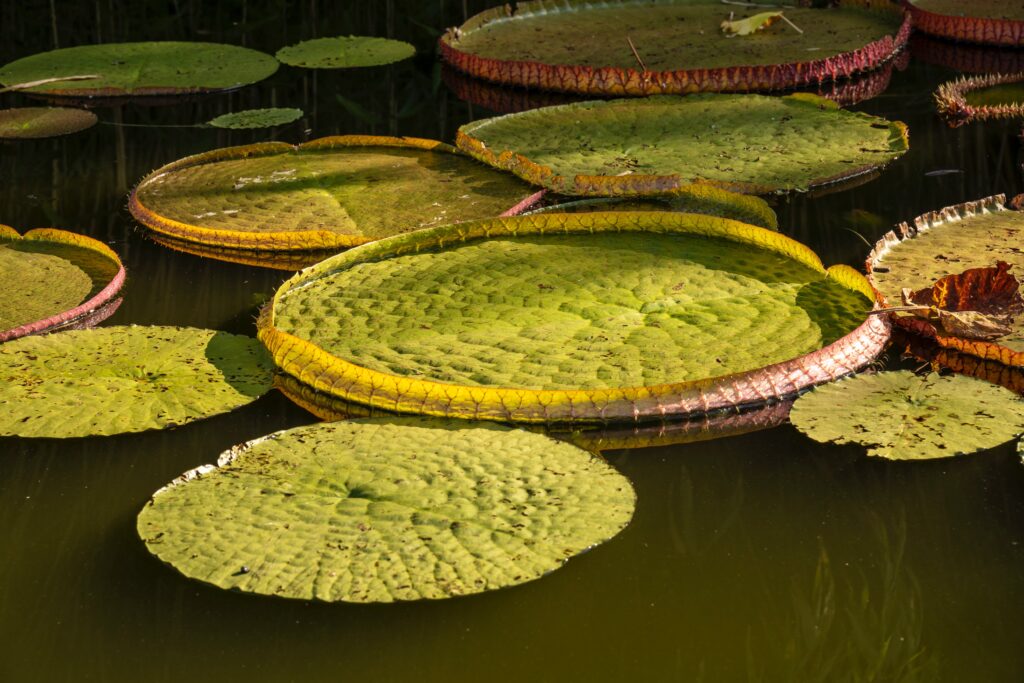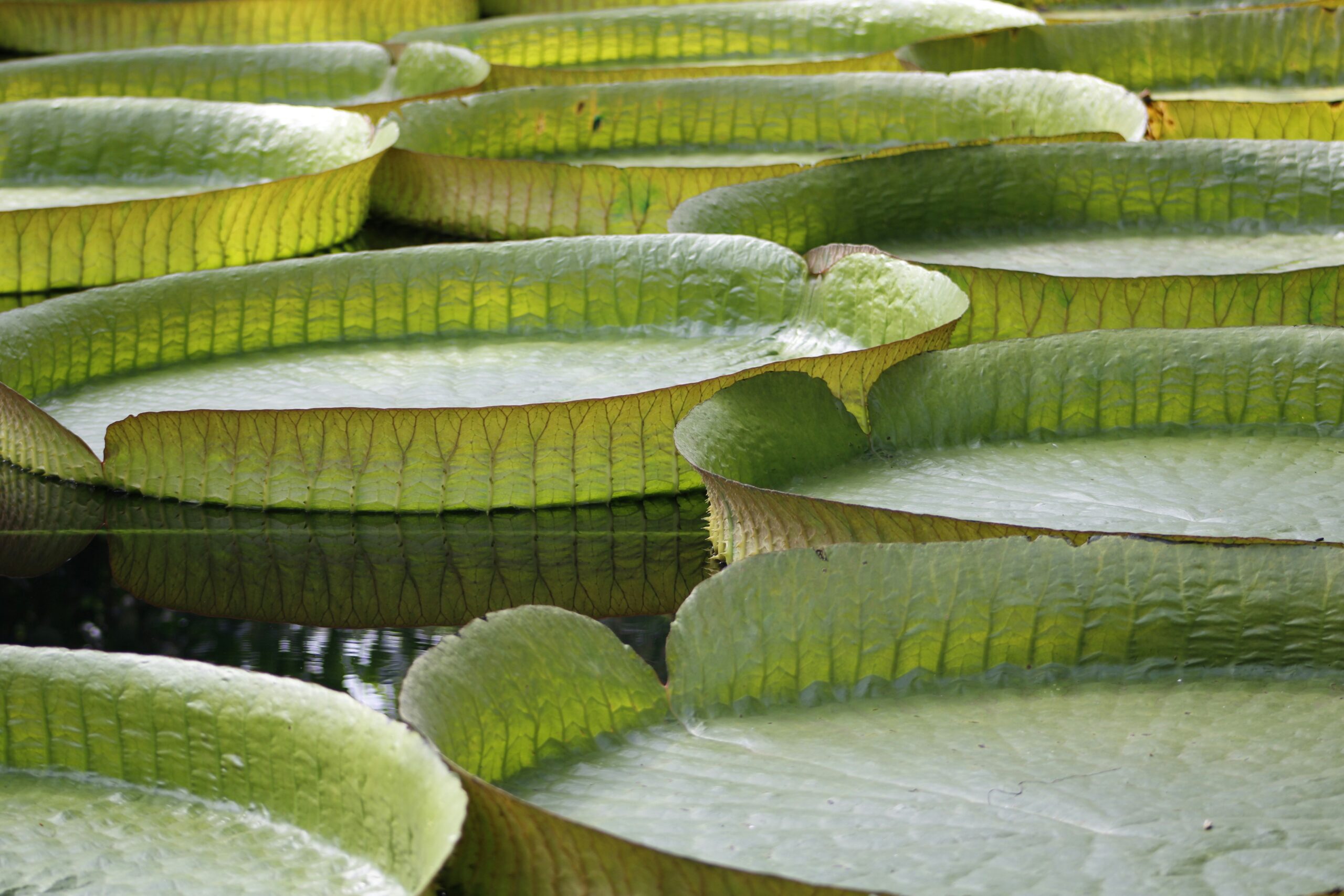The plant kingdom holds some of the most amazing species on the globe. From gorgeous plants that pack a poisonous punch to plants that produce pounds of fruit a day, there seems to be nothing that plants can’t evolve and adapt to do.
One trait always impressive with plants is size, specifically massive size. For instance, trees are a true spectacle of the plant world, showing off how millions of years of adaptations have allowed them to soar high into the skies! One amazing plant that may be lesser known is Queen Victoria’s Water Lilly, a plant heralded for its massive size and unique characteristics.
Today, we will discuss Queen Victoria’s Water Lily, looking at its appearance, biology, and adaptations that allow it to grow so massive!
Victoria amazonica Appearance
The Queen Victoria’s Water Lily (Victoria amazonica) is truly a monster of the plant world. Its primary characteristic is huge lily pads that can grow up to two meters (6.6 feet) in diameter. The stems that hold the lily pads up are also huge growing up to 6m long depending on water level, and having a diameter similar to a tree sapling. Below the water, the underside of the pads is also unique, having a series of spines and veins spanning the entire pad. The pads also have a unique wall along the edges which make it almost appear like a giant bowl!
In addition to their monstrosity, these plants also have beautiful characteristics, mainly with their flowers. The Victoria amazonica creates flowers the size of baseballs. These flowers only bloom at night in very specific intervals. Flowers begin blooming as white flowers that are extremely scented. Some species can even heat their flowers through a process called thermogenesis, all to attract beetles as pollinators. During later nights, the flowers “change sex” and turn purple to fulfill the process of reproduction.
After flowering, they produce seeds that are roughly the size of peas. These seeds are dark green or black, and sink to the bottom of the pond they are growing in to start a new generation of plants.
Victoria amazonica Reproduction

As touched upon earlier, the Victoria amazonica has an interesting life cycle that consists of two flowering stages. To begin, the first stage starts with big white flowers that can heat up and produce a lot of scents. These flowers are female and must be pollinated to produce seeds.
After one night of attracting beetles, the flowers close with the beetles inside and quickly develop male parts, producing an abundance of pollen. The next morning, these new male flowers that are now pink open, releasing the beetles that are now covered in pollen. After opening, these beetles can find their way to other white female flowers, completing the cycle of reproduction.
Soon enough, the pollinated female flowers create seeds that fall to the bottom of the pond to create new lilies.
Amazing Adaptations of the Victoria amazonica
As previously described, the Victoria amazonica has a slew of unique traits that make it a beauty to behold. In addition to having a unique appearance, these traits were developed to help the plant succeed in its natural environment. Let’s take an in-depth look at some of the most unique traits and what they help the plants do in nature.
Huge Pads

The main trait that people notice about the lily is its huge pads. These large spectacles allow the plant to take over a pond, capturing as much light as possible while also shading out competitors that lie below.
Spiny Pads
Spines on the pads of Victoria amazonica prevent fish and other predators from damaging the pads. They can also help to move other floating plants out of the way during growth.
Notched Leaves
Each leaf has a large notch that runs along a part of its edge. Although it may seem counterintuitive to float on top of the water, these notches act as small vents to allow debris and rainwater to flow out. Without these notches, the leaves would likely capture too much water and eventually sink.
Heated/Colored Flowers
The unique flower structure and characteristics are all in place to attract a singular type of pollinator: beetles. Insect pollinators are generally attracted to flowers that are white and heavily scented, which are typical of the Victoria amazonica. Additionally, heated flowers can trick beetles and other insects into thinking they have found some sort of food source to eat or lay eggs on. In tandem, these two flower adaptations make them irresistible to pollinator insects.
Air Tubes

The bottom of the leaves also have large veins that almost look like mini pool noodles. These veins are filled with air and act as buoys to help keep the plant afloat. They are so powerful in effect that they can allow adult leaves to hold up to 300 pounds without sinking!
Walled Pads
One final adaptation that the Victoria amazonica has is walled pads. These walls are only about an inch high, but they act powerfully to prevent animals such as fish from taking bites off the edge of the leaves. Additionally, they can help to balance out the leaf amidst the challenges that nature can create.



